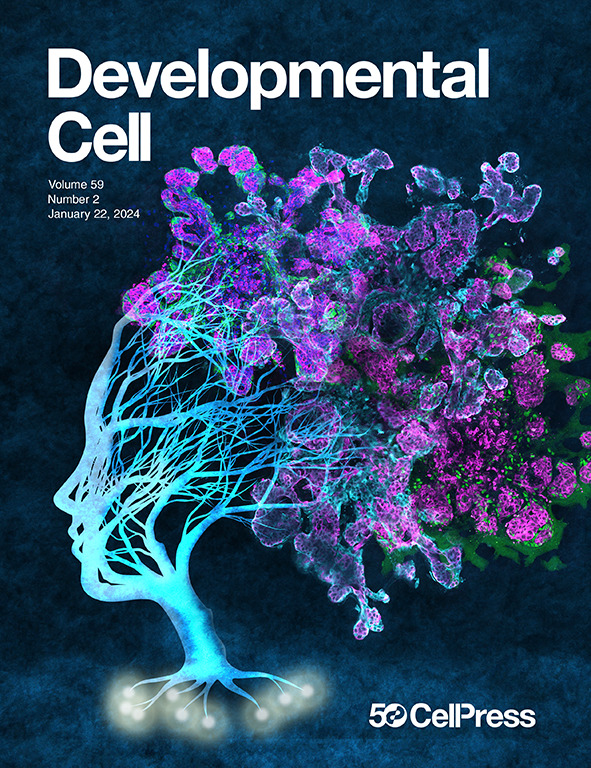Neurodevelopmental hijacking of oligodendrocyte lineage programs drives glioblastoma infiltration
IF 10.7
1区 生物学
Q1 CELL BIOLOGY
引用次数: 0
Abstract
Glioblastoma (GBM) is an aggressive brain tumor with a highly invasive nature. Despite the clinical relevance of this behavior, the molecular underpinnings of infiltrating GBM cells in the peritumoral zone remain underexplored in patients. Here, we show that peritumoral progenitor-like GBM cells activate transcriptional programs associated with increased invasivity, synaptic activity, and NOTCH signaling. These cells spatially colocalize with neurons and exhibit an increased propensity for neuronal crosstalk. The epigenetic encoding of these infiltrative cells mirrors that of uncommitted oligodendrocyte progenitor cells (OPCs) in the developing human brain, a neurodevelopmental state marked by increased synaptic and migratory potential. Functional perturbation of a nominated regulatory factor, ZEB1, confirmed its role in maintaining the invasive and uncommitted developmental potential of infiltrative GBM cells. Our findings provide insights into the neurodevelopmental hijacking that drives GBM infiltration in patients, rationalizing further investigation into targeting differentiation potential as a therapeutic strategy.

神经发育劫持少突胶质细胞谱系程序驱动胶质母细胞瘤浸润
胶质母细胞瘤(GBM)是一种侵袭性脑肿瘤,具有高度侵袭性。尽管这种行为具有临床意义,但在患者中浸润GBM细胞的分子基础仍未得到充分研究。在这里,我们发现肿瘤周围祖细胞样GBM细胞激活与侵袭性、突触活性和NOTCH信号增加相关的转录程序。这些细胞在空间上与神经元共定位,并表现出神经元串扰的增加倾向。这些浸润细胞的表观遗传编码反映了发育中的人脑中未固定的少突胶质细胞祖细胞(OPCs)的表观遗传编码,这是一种以突触和迁移潜力增加为特征的神经发育状态。指定的调节因子ZEB1的功能扰动证实了它在维持浸润性GBM细胞的侵袭性和未承诺的发育潜力中的作用。我们的研究结果为神经发育劫持驱动患者GBM浸润提供了见解,为进一步研究靶向分化潜力作为治疗策略提供了合理的依据。
本文章由计算机程序翻译,如有差异,请以英文原文为准。
求助全文
约1分钟内获得全文
求助全文
来源期刊

Developmental cell
生物-发育生物学
CiteScore
18.90
自引率
1.70%
发文量
203
审稿时长
3-6 weeks
期刊介绍:
Developmental Cell, established in 2001, is a comprehensive journal that explores a wide range of topics in cell and developmental biology. Our publication encompasses work across various disciplines within biology, with a particular emphasis on investigating the intersections between cell biology, developmental biology, and other related fields. Our primary objective is to present research conducted through a cell biological perspective, addressing the essential mechanisms governing cell function, cellular interactions, and responses to the environment. Moreover, we focus on understanding the collective behavior of cells, culminating in the formation of tissues, organs, and whole organisms, while also investigating the consequences of any malfunctions in these intricate processes.
 求助内容:
求助内容: 应助结果提醒方式:
应助结果提醒方式:


